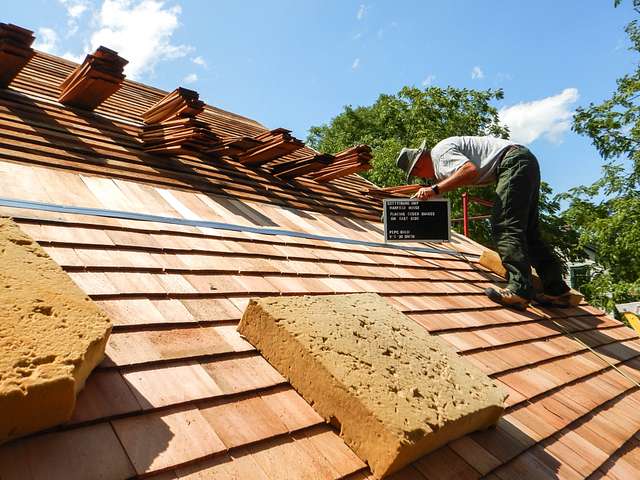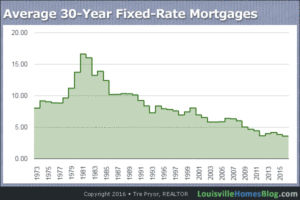As a homeowner, you must have imagined having a wooden roof at one point. It’s beautiful, it’s aesthetic, and something is appealing to it, even if you’re generally not too much into rustic or vintage design. But why aren’t they more common? Let’s dig in to see both the pros and cons of cedar roofs and learn if one might be right for you!

7 Pros and Cons of Cedar Roofs
Now, wooden roofs are generally a bit more expensive and extravagant option. This type of wood is something that many people equate with luxurious furniture and construction elements and for a good reason. Cedar has maintained this reputation since ancient Sumer and people are still putting cedar on their homes today.
Still, how good is cedar actually as a roofing material? Let’s find out!
1. Con: It’s Really Expensive
When formulating a list of the pros and cons of cedar roofs, one should always count the cost. Cedar roofs are expensive. They’re, on average, 2-3 times more expensive than asphalt shingles, but this is just the tip of the iceberg of all the extra expenses.
Cedar shingles are not easy to find. This means that you’ll have less leverage power when shopping around. It also means that your hand may be forced when buying, or you’ll have to pay more for the shipment since the delivery costs will be much higher.
It’s also harder to find craftsmen capable of handling cedar roofs. Unlike asphalt shingles, many roofing companies in your area will have little experience with cedar roofs. This is why their costs of labor will be higher. In the previous segment, we mentioned a scenario with no cedar roofing in the area, which means there won’t be cedar roofing specialists either.
2. Pro: It’s Incredibly Beautiful
Natural materials are always aesthetically pleasing to the human eye. Sure, they can give your home a rustic look, but even if you’re going for vintage, or eco-friendly contemporary design, picking something with such an amazing natural texture and hue is unparalleled.
On the one hand, the scope of color is a bit limited. Technically, you could pick any type of finish, but why even go with cedar if that’s the case? The thing is that while cedar roofing is a hefty investment, it will make your home unique and drive the resale value of the place through the roof.
The bottom line is that while the costs are somewhat higher and the maintenance takes more effort (which we’ll discuss), most homeowners with cedar roofing find this tradeoff more than worth it.
3. Con: Maintenance Takes More Effort
Another thing to keep in mind is the fact that cedar roofs take more maintenance. First, they’re made of wood, making them vulnerable to moisture and increased fire risk.
This means that to prolong their useful life, you need to ensure that the roof has proper insulation/ventilation, regularly remove moss and algae from the roof, and clear the debris more frequently.
Since it’s wood that we’re talking about, cedar shingles will fade when exposed to UV rays. However, when you re-apply new finishes, they’ll be as good as new.
4. Pro: Cedar Can Be Quite Long-lasting
Your cedar roof may last 30 to 40 years when properly cared for. Now, while it’s true that some other roofing types require even less maintenance, the truth is that less maintenance still doesn’t mean any maintenance.
You still need to worry about the insulation and the ventilation; cedar roofing requires more frequent inspections and occasional painting (which is a step you can skip with many other roofing options).
Just keep in mind, for the sake of your budget, inspections and more to lead a maintenance history of your roof. This way, you can track all the expenses, receipts, and records of your roof maintenance investments and activity.
5. Pro: Resilience to pests
Cedar is renowned for its resilience to insects. It’s one of the main reasons it has remained a popular roofing option. However, just because it’s resilient to insects doesn’t mean it’s completely immune to all pests.
Termites are still a problem, even though cedar is the least attractive to them of all the wooden roofs. In other words, this is not a cedar-exclusive problem but a wooden-roofing-specific one.
The most pests you should look out for are cedar roof beetles and carpenter ants. Other than this, woodpeckers are a plague to every type of wooden roof, and cedar is no exception. Remember that these few problems we’ve listed are an exception that confirms the rule. For the most part, cedar is quite resilient.
6. Pro: Great Thermic Properties
When it comes to the reduction of heat that leaves your home and the overall energy efficiency, cedar is just an amazing option and one of the best forms of natural insulation out there. Remember that while making cedar roofing, you’ll probably install great ventilation, another advantage of your roof insulation.
From the ecological standpoint, you must understand that cedar roofing doesn’t contribute to the urban heat island effect. It’s not just the lack of emission from the standpoint of heat loss that matters; it’s the effect of this heat on the environment.
You must also bear in mind that cedar roofs don’t exist in a vacuum. The roof color, attic efficiency, insulation, and reflectivity of the finish will also affect these things. Also, comparing their thermal properties to other roofing materials (before deciding) is generally a good idea.
7. Pro: Dimensional Flexibility
One of the most important things about cedar roofing is that it can be installed even on the most complex roofs (in terms of shapes and angles). If you plan for a unique or customized roof design, you have much to look forward to.
Also, keep in mind that cedar shingles are incredibly durable. They’re made to withstand heavy wind and rain, which means that, with the right craftsmanship, no idea you have should be too impossible to pull off.
Wrap Up
We hope you have learned a few things by reading through our list of pros and cons of cedar roofs. At the end of the day, whatever roof you choose, you’ll be stuck with it for decades. So, it’s our goal that you make the right choice for you. Now, you’re more knowledgeable on the topic which will help you whichever route you take.


